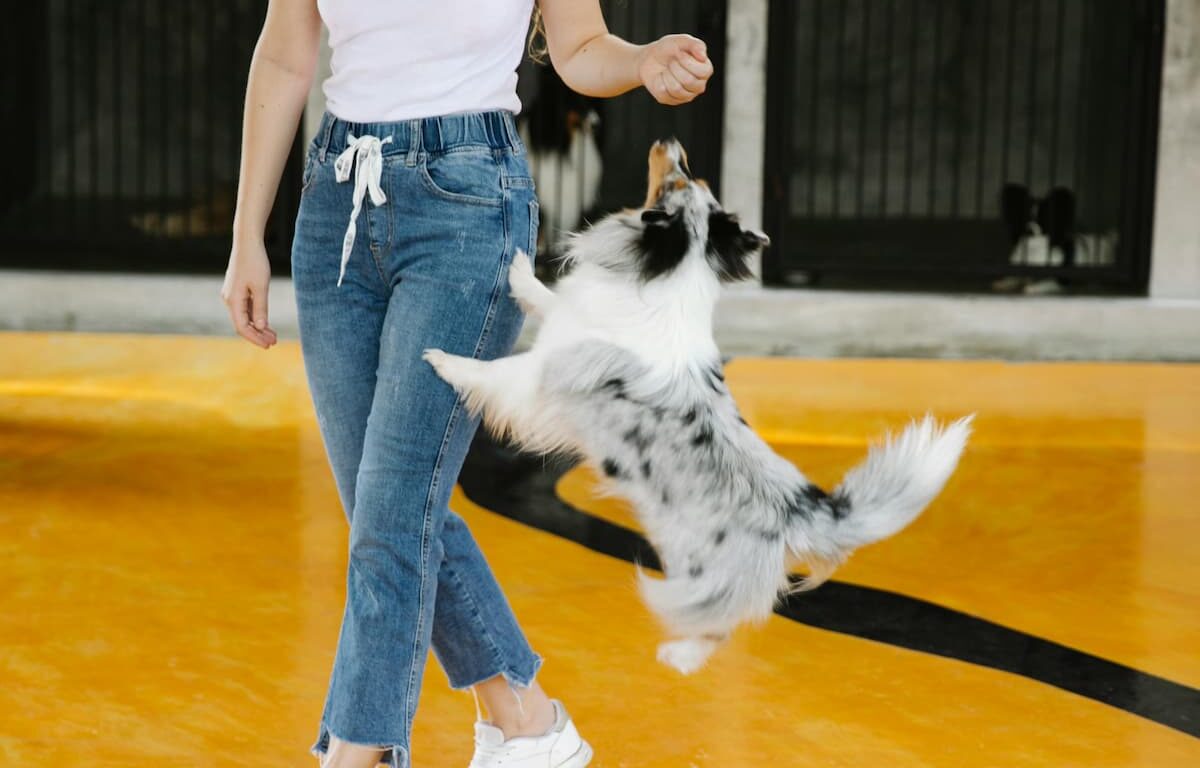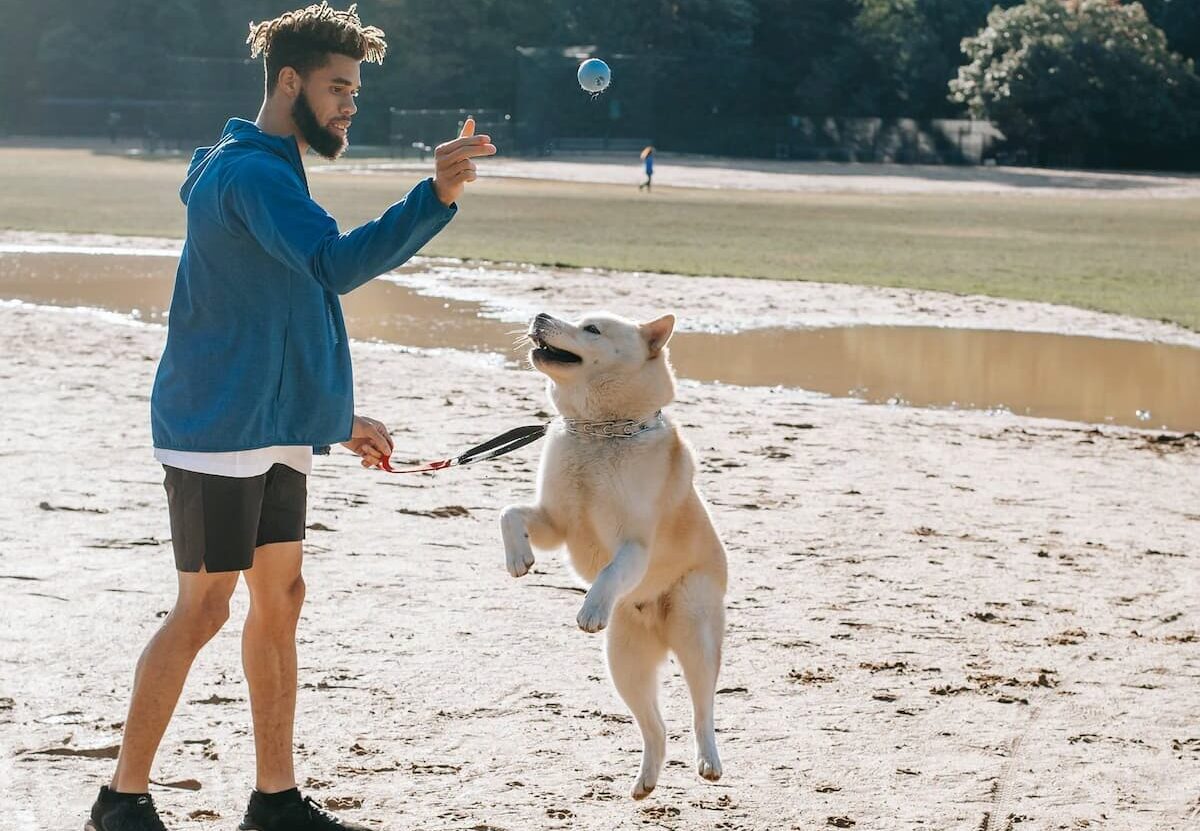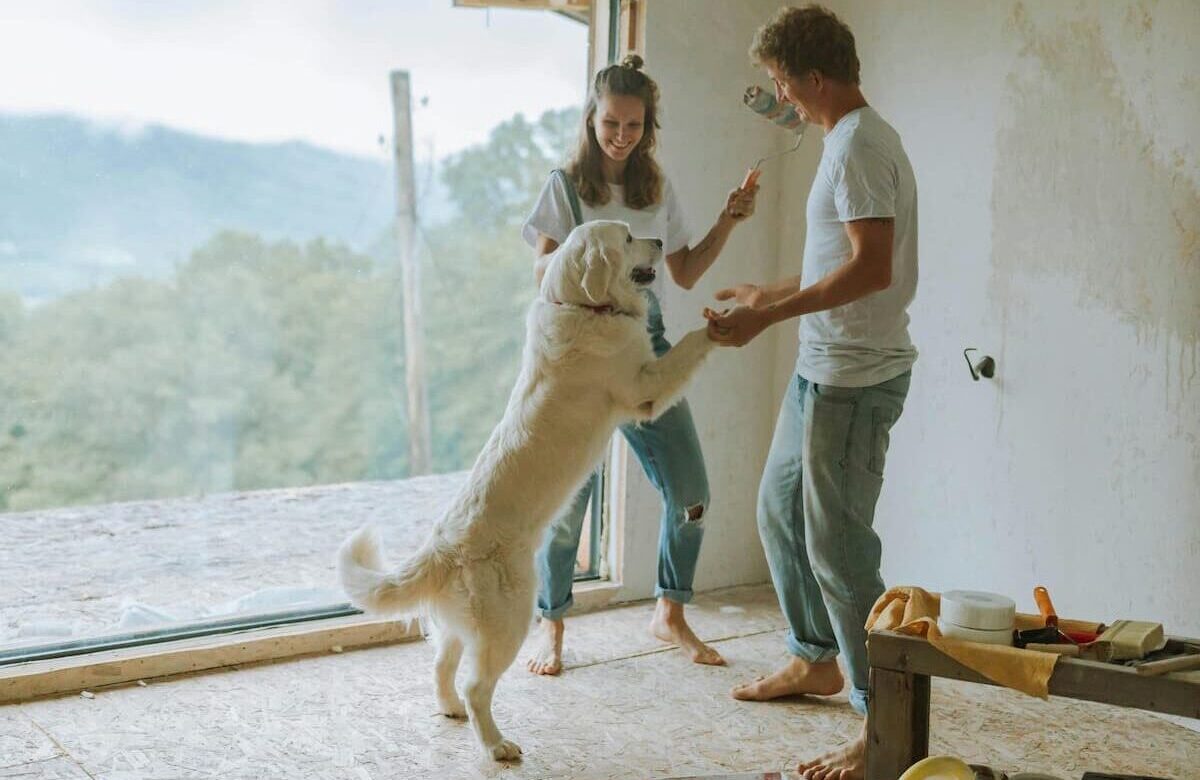Have you ever experienced the sheer joy of being greeted by an exuberant ball of fur, only to find yourself caught off guard as your canine companion jumps on you with relentless energy?
Ah, the excitement (and chaos) that ensues!
It’s a common sight for dog owners, but have you ever wondered why our furry friends simply can’t resist leaping into the air when they see us?
This article will uncover the reasons behind this high-flying behavior.
The Science Behind Dogs’ Jumping Behavior
Picture this: you walk through the front door after a long day at work, and your furry friend comes bounding towards you, leaping up in excitement.
While it may seem like your dog is just trying to say hello, there’s actually a scientific explanation behind this common behavior.
So, why do dogs jump on you when they see you?
Here are some reasons behind this behavior:
Social Greeting
Dogs are highly social animals, and jumping up to greet you can be seen as a way to show their excitement and eagerness to interact with you.
From a dog’s perspective, reaching your face or torso through jumping is their way of getting closer to you, as these are the areas where humans typically offer affection and attention.
Seeking Attention
Dogs are known to be attention seekers, and jumping can be a way for them to grab your attention.
By jumping on you, your dog is saying, “Look at me! Pay attention to me!”
They have learned that jumping can elicit a response or interaction, whether it’s through petting, playing, or simply acknowledging their presence.
Dominance and Hierarchy
In some cases, dogs may jump on you as a display of dominance or asserting their position in the household hierarchy.
This behavior is more commonly seen in untrained or poorly trained dogs who are seeking control or a sense of authority.
However, it’s important to note that jumping alone is not always a clear indication of dominant behavior, and it could simply be a result of excitement or lack of manners.
Unconditional Love
Dogs are known for their ability to form strong emotional bonds with their owners, and their jumping behavior is often a manifestation of their joyous emotions.
They simply can’t contain their excitement and want to express their love and happiness in the only way they know how – by leaping up to greet you.
It’s their way of saying, “I missed you, and I’m so excited you’re here!”
Anxiety
Some dogs may feel nervous or anxious around new people or in unfamiliar environments.
They may jump up as a way to seek reassurance or create distance from the perceived threat.
Teaching Dogs Alternative Greetings
While it’s endearing to see your pup jumping up in excitement, it’s important to teach them appropriate behavior to greet you or anyone else, especially since this behavior can potentially cause harm as they grow bigger.
As such, effective training is required in order to teach your dog alternative greetings.
To tackle this behavior, it’s crucial to remain consistent with your training.
One effective technique is to teach your dog an alternative greeting behavior, such as sitting or offering their paw.
Start by reinforcing these commands in a calm and controlled environment, and gradually introduce distractions, such as visitors.
Reward your dog with a treat and praise when they successfully engage in the alternative greeting behavior.
Another technique is to divert their attention by using a toy or a treat.
As soon as you enter the room, have a toy or treat ready to distract your dog from jumping.
This way, you can redirect their energy onto an appropriate behavior, such as fetching or sitting down.
Pair this with positive reinforcement, and in no time, your furry friend will learn that alternative greetings are much more rewarding.
If your dog exhibits anxious jumping behavior, it’s crucial to address their underlying anxiety.
Gradual desensitization and counter-conditioning techniques can help them associate positive experiences and rewards with the presence of strangers.
Consulting a professional dog trainer or behaviorist can provide valuable insight and guidance in managing anxiety-induced jumping behaviors.
Remember, training takes time and patience, so don’t get discouraged if your dog doesn’t catch on immediately.
Consistency and positive reinforcement are key when it comes to teaching dogs alternative greetings.
By implementing these effective techniques, you’ll be able to enjoy the company of your canine companion without the hassle of them jumping on you or your guests.
Remember, a well-behaved dog is a happy dog!
FAQ
Q: So, why do dogs jump on us in the first place?
A: Picture this scenario: you’ve been away for a few hours – it feels like eternity to your four-legged companion.
The moment they catch a glimpse of you, their excitement skyrockets.
Jumping up is a way for dogs to release all that pent-up energy and let you know just how much they’ve missed you.
It’s their way of saying, “Hey there, human! I’m thrilled to see you!”
Q: Is there more to it than just expressing excitement?
A: Absolutely!
Dogs have an innate desire to seek our attention and jumping up is their way of grabbing it.
By pouncing on you, they’re essentially saying, “Hey, look at me! Pay attention to me!”
It’s like a furry version of a high-five, but with a little more exuberance.
Q: But is this behavior always appropriate?
A: Ah, the million-dollar question!
While it’s adorable to be greeted with those wagging tails and wiggly bodies, not everyone appreciates a dog-sized welcome hug.
That’s why it’s crucial to distinguish between a friendly greeting and a not-so-desirable behavior.
Although dogs mean well, jumping up can lead to scratched arms, dirty clothes, or even unintentional injuries for more vulnerable individuals, such as children or elderly folks.
Q: So, what can we do to encourage our furry pals to abandon this habit?
A: Fear not, dear dog lovers, we’ve got some tricks up our sleeves that can help manage the jumping frenzy.
Here’s what you can try:
Stay calm and collected: When you enter your home or encounter your dog, try to maintain a calm demeanor.
This sends them a signal that overly excited behavior won’t earn their desired attention.
Teach an alternative behavior: Instead of jumping up, train your pup to showcase more appropriate greeting manners, such as sitting or offering a paw.
Reward their good behavior with treats, praise, and plenty of belly rubs!
Consistency is key: Everyone in your household should reinforce the same rules.
If your dog receives inconsistent responses to jumping, it may confuse them and make it even harder to break the habit.
Redirect the energy: Engaging in a quick play session or a brief walk before meeting your dog can help them release some energy, making jumping less likely.
Remember, a tired dog is usually a better-behaved dog!
Q: Are there any other tips to keep in mind while our dogs jump on us?
A: Absolutely!
Remember, patience and positive reinforcement are paramount.
Dogs thrive on our love and attention, so be consistent with your training, and soon enough, your pooch will learn that staying grounded is the path to our affections.
Q: In a nutshell, why do dogs jump on us?
A: Dogs jump on us when they see us because they are bursting with excitement, seeking attention, and displaying their uncontainable joy.
While it’s natural for them, it’s important for us to guide them towards more polite greetings.
With some training, consistency, and a sprinkle of patience, we can enjoy calmer, less jumpy reunions with our beloved furry companions.
Closing the Chapter
After peering into the depths of our canine companions’ minds, we discovered that their jumps are motivated by a cocktail of emotions and instincts.
It’s as if they can’t contain their joy and sheer thrill at the mere sight of you.
Yes, dear readers, it’s all about those happy hormones rushing through their furry bodies!
First and foremost, their innate social nature kicks in.
Dogs are pack animals at heart, and jumping on you is their way of reaching out, quite literally, to express their excitement and reunion.
By jumping up and planting their paws on you, they’re revealing their desperate need for attention and connection.
Another key ingredient in this bouncy phenomenon is good old-fashioned happiness.
Dogs thrive on the joy of the present moment, and when they see you, their happiness meter skyrockets.
Soaring higher than a squirrel in a tree, their jumps become a manifestation of pure bliss, their bodies seemingly unable to contain the elation bursting within them.
Now, let’s not forget our little mischief-makers.
Dogs love adventure, and by leaping into your arms, they believe they are setting off on a thrilling escapade filled with playtime and fun.
It’s their way of saying, “Hey, let’s embark on this crazy journey together!”
But let us not be fooled by the charm of these airborne antics.
While it may seem adorable and endearing, jumping also unveils a subtle message from your furry friend.
Through these energetic leaps, they are acknowledging your role as their leader, affirming their trust in you.
They are looking for acceptance and approval, seeking recognition of their affectionate display.
So dear readers, the next time those paws reach for the skies as your faithful companion greets you, embrace their enthusiasm with open arms (literally!).
Give them the love and attention they crave, for after all, their airborne acrobatics serve as a testament to the unbreakable bond that exists between humanity and our loyal canine companions.












